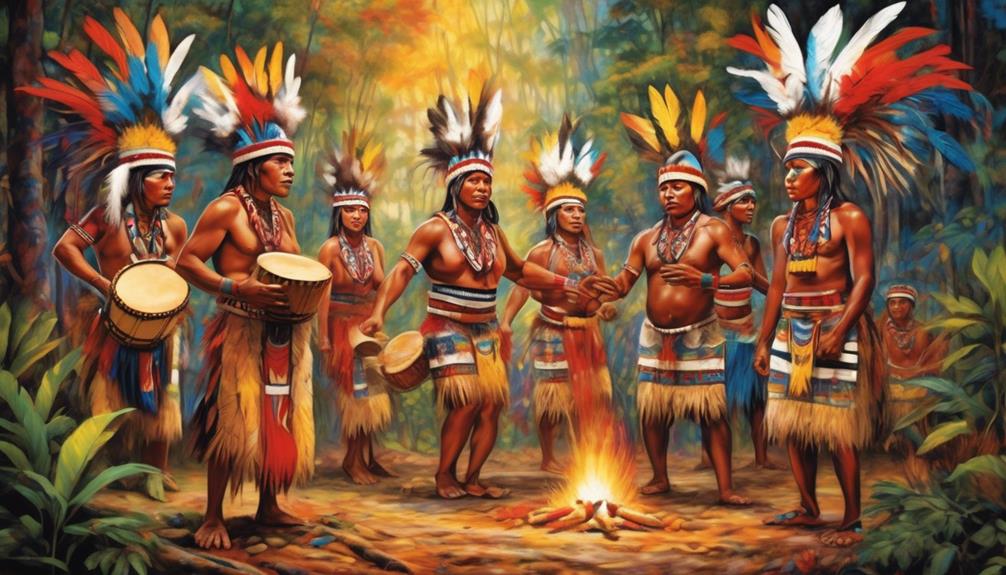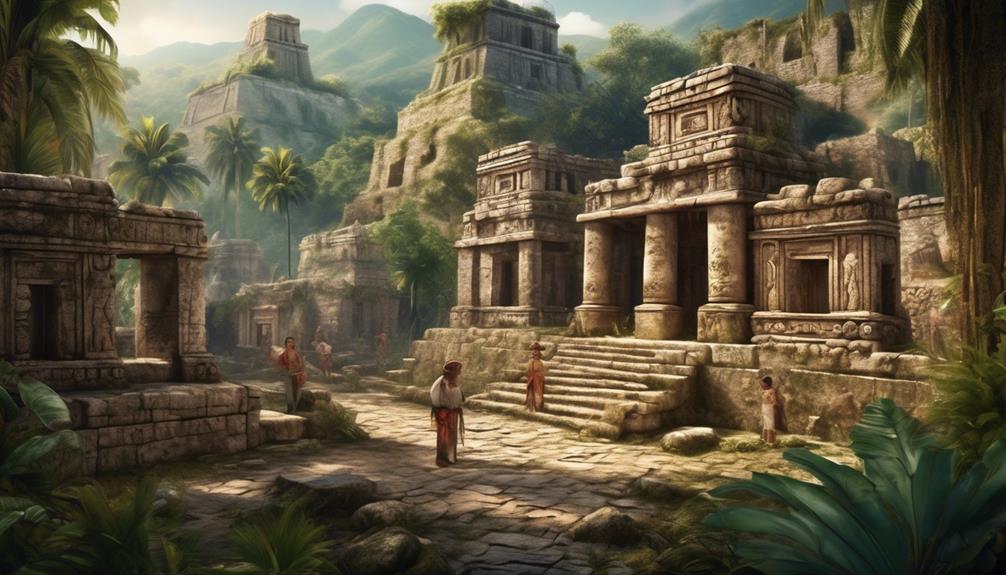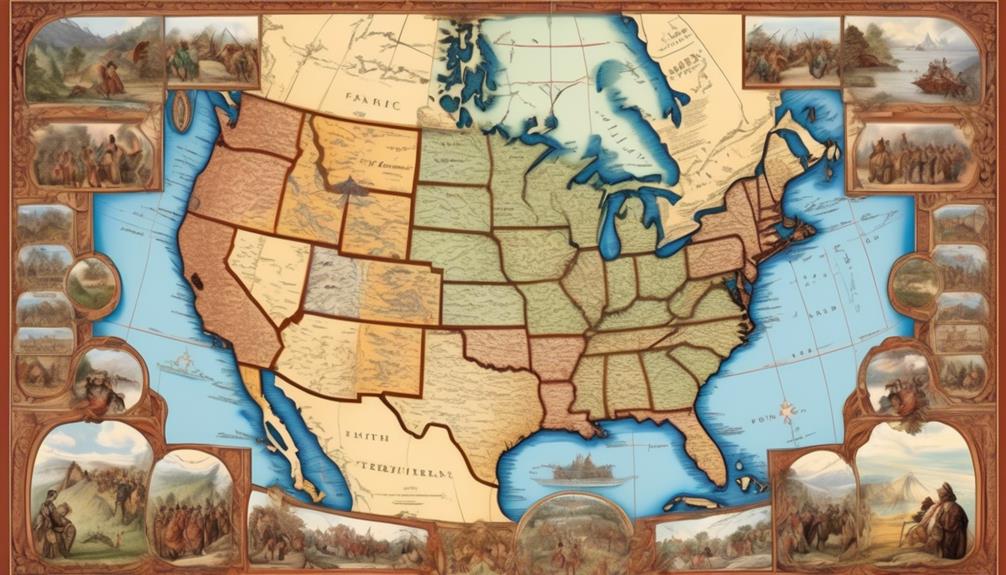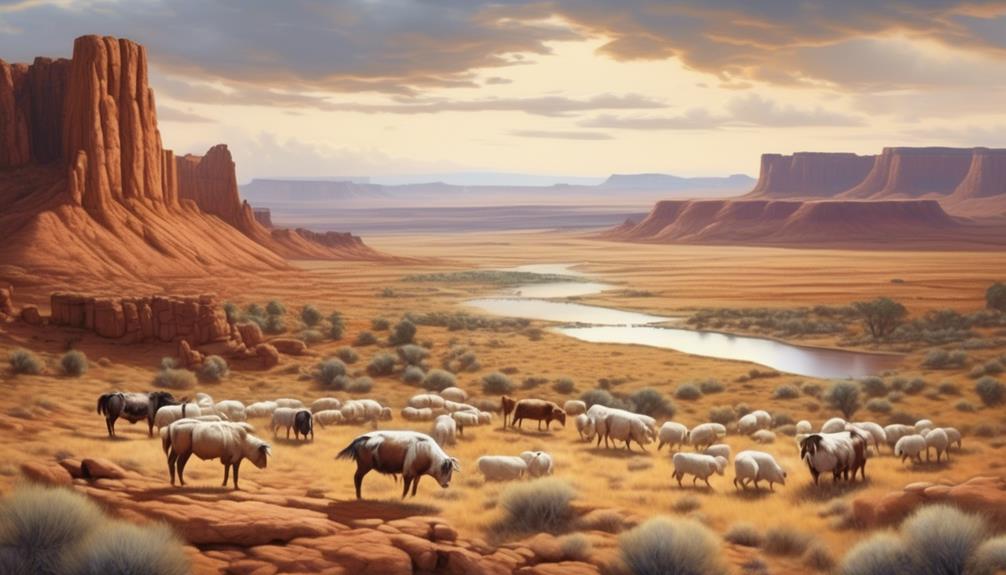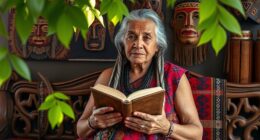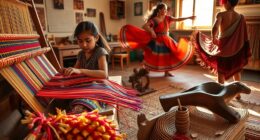We are all aware of the phrase “walking a mile in someone else’s shoes,” but on Indigenous Peoples Day, it is crucial to recognize the land that we are standing on.
As we gather to celebrate this important day, it's crucial to acknowledge the deep-rooted history and ongoing contributions of Indigenous peoples. However, the question remains: how can we truly honor and respect their heritage and culture in a meaningful way?
Well, let's explore some thoughtful and impactful ways to do just that.
Key Takeaways
- Understanding the significance and history of Indigenous Peoples Day
- Educating oneself on Indigenous history and acknowledging injustices faced by Indigenous communities
- Supporting Indigenous communities and businesses through economic empowerment and ethical tourism
- Amplifying Indigenous voices and perspectives by actively listening, supporting artists and entrepreneurs, and advocating for equity and representation.
Understanding Indigenous Peoples Day
As we honor Indigenous Peoples Day, it's important to understand the significance and history behind this observance. Indigenous Peoples Day celebrates the resilience and cultural significance of Indigenous communities. It acknowledges the rich and diverse cultures, traditions, and histories of Indigenous peoples, which have often been marginalized and overlooked. This day provides an opportunity to recognize and honor the enduring strength and contributions of Indigenous peoples throughout history.
Understanding the cultural significance of Indigenous Peoples Day is crucial. It's a time to elevate and amplify the voices of Indigenous communities, to learn from their wisdom, and to support their ongoing struggles for justice and recognition. This observance also serves as a reminder of the continued resilience of Indigenous peoples in the face of historical trauma and ongoing challenges.
Educating Yourself on Indigenous History
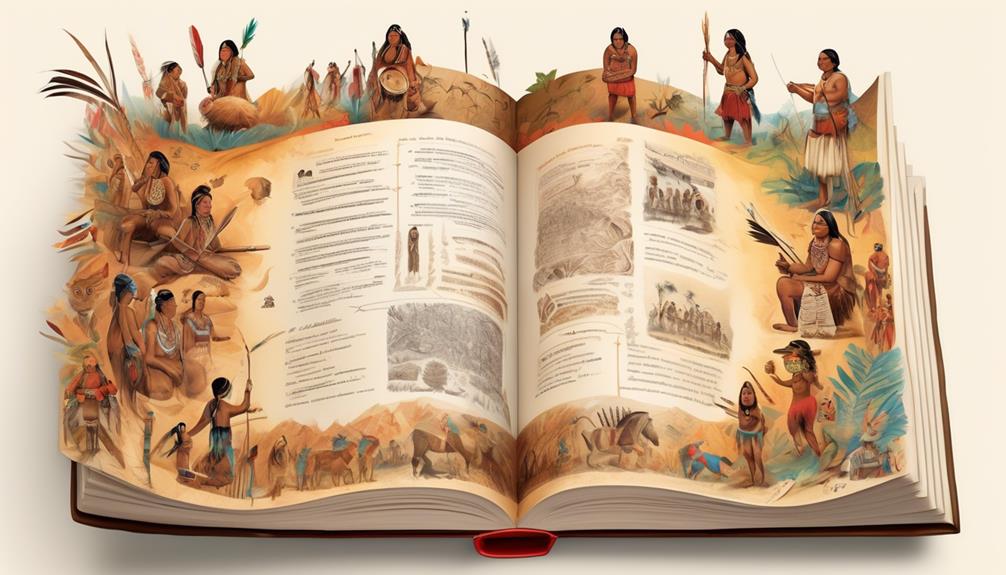
Exploring Indigenous history allows us to gain a deeper understanding of the diverse and complex tapestry of Indigenous cultures and the impact of colonialism on their communities. Learning about Indigenous resistance and cultural preservation is crucial in recognizing the strength and resilience of Indigenous peoples throughout history. It's essential to educate ourselves on the rich traditions, languages, art, and spiritual beliefs that have been integral to Indigenous cultures for centuries. By delving into Indigenous history, we can acknowledge the injustices and atrocities faced by Indigenous communities and work towards a more inclusive and equitable future.
To educate ourselves on Indigenous history, we can start by seeking out literature and resources authored by Indigenous scholars and historians. It's important to approach this learning with humility, actively listening to Indigenous voices and acknowledging the lived experiences within their communities. Engaging with documentaries, films, and visiting Indigenous museums and cultural centers can also provide valuable insights into the complexities of Indigenous history.
Moreover, understanding the ongoing efforts of Indigenous resistance and cultural preservation can inspire us to become better allies and advocates for Indigenous rights and sovereignty. By actively educating ourselves, we can contribute to the preservation and celebration of Indigenous cultures and histories.
Supporting Indigenous Communities and Businesses
Learning about Indigenous history has deepened our understanding of their resilience and the impact of colonialism; now, we can actively support Indigenous communities and businesses.
Economic empowerment is crucial in helping Indigenous communities thrive. One way to do this is by consciously choosing to support Indigenous businesses. Whether it's buying traditional crafts directly from Indigenous artisans or purchasing products from Indigenous-owned companies, our consumer choices can make a significant difference.
Community support also plays a vital role in uplifting Indigenous groups. This can involve advocating for fair policies, amplifying Indigenous voices, and participating in initiatives that promote economic development within these communities.
Cultural preservation is another essential aspect of supporting Indigenous communities. By engaging in ethical tourism, we can contribute to the preservation of Indigenous traditions and heritage. When visiting Indigenous lands, it's important to do so respectfully and responsibly, honoring the local customs and traditions. Additionally, participating in cultural events and activities organized by Indigenous groups can provide direct support for their cultural preservation efforts.
Amplifying Indigenous Voices and Perspectives
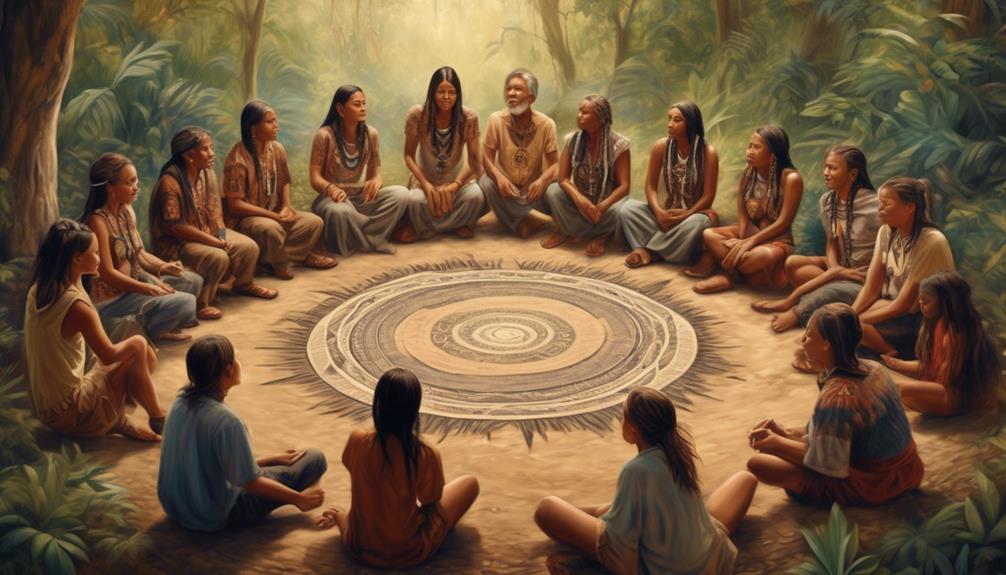
Understanding the importance of amplifying Indigenous voices and perspectives is crucial for building a more inclusive and equitable society. It's essential to recognize the significance of Indigenous representation in all aspects of our lives, from education and media to politics and the arts. By doing so, we can create a more diverse and enriched cultural landscape that celebrates the unique experiences and wisdom of Indigenous peoples.
- Listening and Learning: Actively seek out and engage with Indigenous voices, whether through literature, art, or community events, to gain a deeper understanding of their perspectives and experiences.
- Supporting Indigenous Creators: Amplify Indigenous artists, writers, and entrepreneurs by purchasing their work and sharing their stories to promote cultural appreciation and representation.
- Challenging Misconceptions: Speak out against stereotypes and misinformation about Indigenous peoples, and educate others about the rich and diverse cultures that exist within Indigenous communities.
- Centering Indigenous Narratives: Encourage the inclusion of Indigenous perspectives in educational curricula, historical narratives, and public discourse to ensure a more accurate and respectful portrayal of Indigenous history and contemporary issues.
- Advocating for Equity: Support policies and initiatives that prioritize the rights and well-being of Indigenous communities, and advocate for greater representation and participation in decision-making processes.
Engaging in Meaningful Cultural Exchange
In our efforts to foster mutual understanding and appreciation, we actively engage in meaningful cultural exchange with Indigenous communities, recognizing the valuable insights and perspectives they offer.
Cultural exchange is a two-way street, and it's crucial to approach it with an open mind and willingness to learn. Respectful dialogue forms the foundation of this exchange, where both parties listen attentively and communicate with empathy and understanding.
It's essential to acknowledge the diversity within Indigenous communities and recognize that there's no single 'Indigenous culture.' Each community has its own traditions, languages, and customs, and engaging in cultural exchange involves honoring and celebrating this diversity.
When engaging in cultural exchange, it's important to approach it with humility and a genuine desire to build authentic connections. This involves actively seeking out opportunities to learn from Indigenous peoples, whether through participating in traditional ceremonies, sharing meals, or collaborating on projects.
It's also crucial to respect and adhere to any protocols or guidelines set by the Indigenous communities regarding cultural exchange, as this demonstrates a deep commitment to understanding and honoring their traditions.
Frequently Asked Questions
How Can I Actively Support Indigenous Communities in My Area on Indigenous Peoples Day?
We can actively support indigenous communities in our area on Indigenous Peoples Day through land acknowledgment and community engagement. It's important to recognize the historical and ongoing impact of colonization on indigenous peoples.
We can also support economic empowerment by purchasing goods and services from indigenous-owned businesses and organizations. Additionally, we can participate in and promote cultural events that celebrate and preserve indigenous traditions and heritage.
What Are Some Common Misconceptions About Indigenous History That I Should Be Aware Of?
Challenging stereotypes about indigenous history is crucial. Historical accuracy in education helps dispel misconceptions.
It's vital to recognize the diverse and rich histories of indigenous peoples, which have often been misrepresented or omitted. Understanding the impact of colonization and ongoing systemic injustices is essential.
Acknowledging indigenous resilience and contributions to society is a meaningful way to honor their heritage.
How Can I Ensure That I Am Respectfully Engaging in Cultural Exchange With Indigenous Peoples?
Ensuring respectful engagement in cultural exchange with Indigenous peoples involves understanding and respecting traditions. We prioritize cultural appreciation, strive for cultural sensitivity, and seek authentic engagement.
It's crucial to approach with an open mind, willingness to listen, and a genuine desire to learn. Acknowledging and honoring Indigenous knowledge and perspectives is essential.
This fosters meaningful connections and promotes mutual understanding, creating a positive impact on our shared journey.
What Are Some Ways to Amplify Indigenous Voices and Perspectives in My Local Community?
Amplifying Indigenous voices in our local community is crucial. Celebrating traditions, sharing Indigenous art, and promoting educational outreach are impactful ways to honor and uplift Indigenous perspectives.
Did you know that over 5 million Indigenous people live in the U.S., comprising a rich tapestry of cultures and traditions? Engaging with Indigenous communities and supporting their initiatives helps create a more inclusive and respectful society.
Let's work together to ensure their voices are heard and valued.
Are There Any Specific Indigenous-Owned Businesses or Organizations That I Can Support on Indigenous Peoples Day?
There are many indigenous-owned businesses and organizations that we can support on Indigenous Peoples Day. It's important to seek out and uplift these businesses and organizations, as they often face barriers and lack visibility.
Supporting local artisans and celebrating traditional practices is a great way to honor and recognize the contributions of indigenous peoples. By doing so, we can help promote economic empowerment and preserve cultural heritage within indigenous communities.
Conclusion
As we wrap up our discussion on how to honor Indigenous Peoples Day, let's remember that this is an ongoing commitment, not just a one-day event.
Let's continue to educate ourselves, support Indigenous communities, and amplify their voices.
Let's strive for meaningful cultural exchange and build a future that's inclusive of all people.
Together, we can create a world where Indigenous peoples are respected, celebrated, and honored.
So, let's keep the spirit of Indigenous Peoples Day alive every day!
Mary is a passionate writer who brings creativity and a fresh perspective to our team. Her words have the power to captivate and inspire, making her an essential contributor to our content. Mary’s commitment to storytelling and dedication to promoting Indigenous culture ensures that her work touches the hearts of our readers. We’re fortunate to have her as part of our team.
